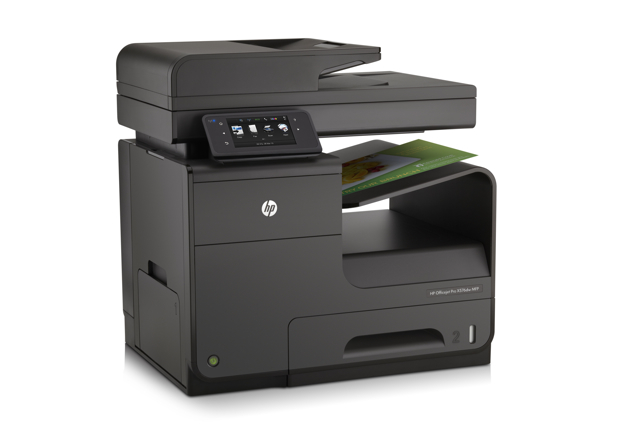
The inkjet printer has become a versatile peripheral that now handles photo printing, scanning, copying, and faxing in both home and small office environments, but none of these features can mask inkjet’s inherent problem: speed. When you compare it with a laser printer, inkjets can’t compete, despite the advances in inkjet printing tech. But, as Hewlett-Packard celebrates the 25th anniversary of the first Deskjet inkjet printer, the company has officially unveiled the Officejet Pro X, which HP claims is the world’s fastest desktop printer as recognized by Guinness World Records (who knew Guinness also tracks these types of records?).
Just how fast is this new printer? Up to 70 pages per minute, which is faster than laser. HP says it’s also half the cost of a laser printer. HP accomplishes this with a new scalable inkjet print platform called HP PageWide Technology. Unlike current inkjets that use a print head that must travel back and forth across a sheet of paper, the Officejet Pro X uses a bar that spans the width of a page. As the paper moves along, the PageWide print head remains stationary. It can also print in color using four inks. Note that the claim, however, refers to draft mode.
HP says the Energy Star-certified Officejet Pro X uses up to 50-percent less energy and supplies waste than most color laser printers. It can also make two-sided prints to save paper. The printer will come in two flavors: a single-function variant starting at $449 (shown below) and a multifunction version starting at $649 (shown above). It’s available to buy now.

This technology isn’t a new to HP. It was first used in the unsuccessful Edgeline office MFP, and continues to be used with several of HP’s photolab models. But the Officejet Pro X will be the first time that HP has used this technology on the desktop.
Printers and MFPs using a similar wide page spanning print-head have been available from Lenovo and LG for more than a year. These are based on Memjet’s 60ppm desktop engine, but are not sold in the U.S. Printers using the Memjet engine do not offer duplex printing like the Officejet Pro X.
(Ted Needleman contributed to this article.)
Editors' Recommendations
- Inkjet vs. laser: What’s the difference, and which is best?
- You’ll never have to worry about ink again with HP’s new Neverstop Laser printer

